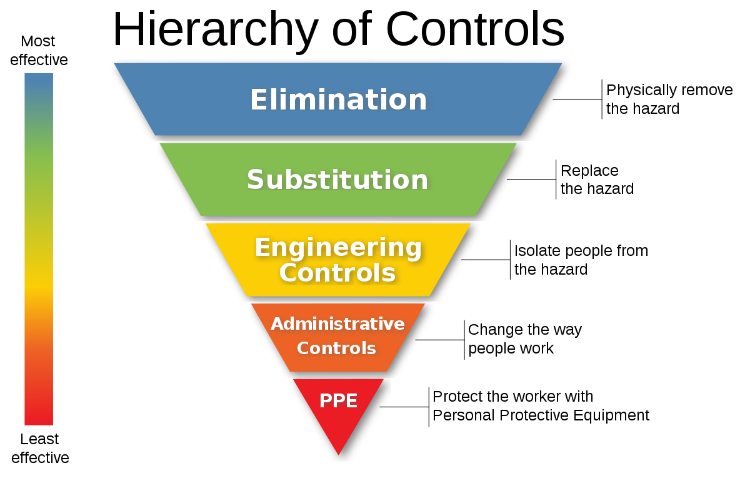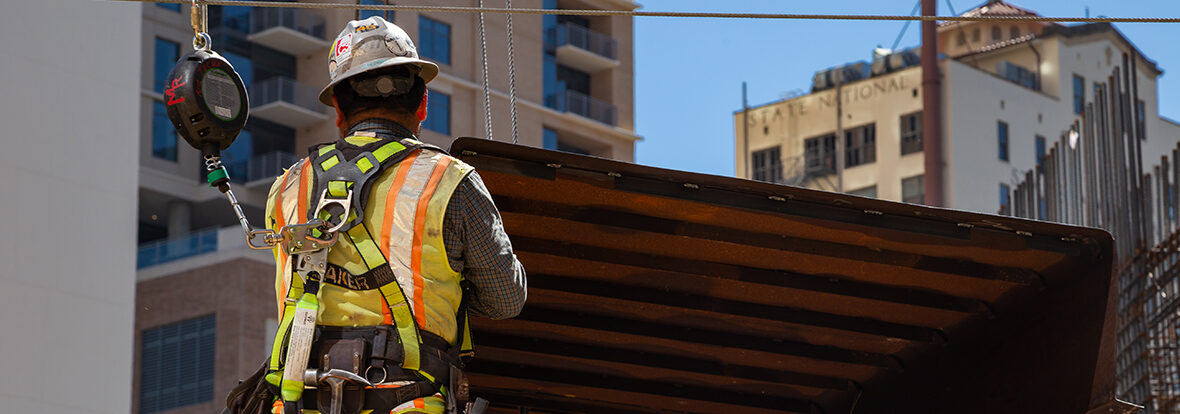Fall protection best practices should be implemented on every construction site; however, OSHA requires fall protection when working at heights of six feet or higher in the construction industry, as well as when working over dangerous equipment and machinery at any distance in any industry.
How to protect construction workers from falls
Protecting construction workers from falls requires prevention measures ahead of time and active protection throughout the duration of a project.
During the design and planning phases, design and construction teams work together to anticipate the possible construction issues a project may face. During this same time, it is also important to analyze possible safety risks using past lessons learned and industry best practices to eliminate or minimize any potential fall hazards during the project’s lifecycle. Recommendations at this phase can be studied, evaluated and implemented well before construction starts, creating a safer outcome for both construction workers and the end users.
As the project progresses, proactively planning before the start of any major task will continue to mitigate fall hazards on job sites throughout construction. Circumstances associated with fall incidents in the work environment frequently involve:
- Slippery, cluttered, or unstable walking/working surfaces
- Unprotected edges, floor holes and wall openings
- Misused permanent or personal fall protection
Proper housekeeping and material storage both prevent slips/trips/falls. Proper edge and hole protection prevent falling objects and twisted ankles. Maintenance of guardrails and barriers, along with proper personal fall protection training, inspection and use can prevent falls on construction sites. Regularly analyzing and managing each type of fall hazard will create projects that are safe, effective, and productive.
Hierarchy of controls in construction
Controlling exposures to occupational hazards is the fundamental method of protecting workers. Traditionally, a hierarchy of controls has been used as a means of determining how to implement feasible and effective control solutions. One representation of this hierarchy is as follows:

Fall protection training
It is important to ensure each employee is properly trained in fall protection and prevention best practices prior to beginning each job. Training is required prior to working in construction at any capacity and should be provided by an instructor with a qualifying degree or certification.
While initial training is vital, it is also important to continue training throughout a career in construction to ensure employees are up to date on the most recent best practices and fall protection equipment.
Fall protection equipment
Alongside the preventative measures and safety procedures at construction sites, it’s also important to ensure proper fall protection equipment is being utilized, adding an additional layer of security for workers and companies alike. These tools are often part of what’s called a fall arrest system, which includes a number of tools working together to stop a person from falling. Below are examples of fall protection equipment:
- Belts: go around the workers waist to directly connect to an anchor or lifeline to keep workers away from fall hazard areas
- Lanyards: short sections of webbing or wire attached to the D-ring of a safety harness
- Lifelines: a rope or wire used to connect a safety belt or harness to the anchor
- Full body harnesses: distributes the strain of a fall protection system over the thighs, pelvis, waist, chest, and shoulders and helps keep the body upright to best absorb the fall
How does Gilbane keep their workers safe from falls?
Gilbane is continuously dedicated to ensuring the safety of all workers on our job sites. The best way to prevent falls from occurring is to eliminate the hazard, followed by substitution and engineering the hazard out. Too often in construction we reach for a Personal Fall Arrest System – such as a lanyard or body harness- before evaluating a situation and looking for a way to eliminate and/or engineer a hazard out because it takes a little more time or costs a little more. In most cases, the care spent up front is beneficial to all parties, saving time, money and lives in the long run.
While falls from heights are one of the most dangerous threats on our jobsites, they are also preventable. Take some time to study your own jobsite and implement impactful lifesaving fall prevention measures.
Click here for a fall prevention brochure for the job site and at home.
This blog post was updated October 2021.


4 Replies to “Fall protection: Safety on construction sites”
Marcus Partlow
Thank you Drew!! Very well written summary that we all need to revisit on a regular basis!
Raghuvaran Chakkravarthy
Thanks for sharing the insightful article on fall prevention. Gilbane safety and design team doing the wonderful job during the design phase of the project to address all the peevious lessons learned and all possible hazards during the design phase of the project.
Gilbane’s proactive approach using the prevention through the design making the big difference in construction industry.
Again thanks for sharing this article Sir Drew.
Quintin Holman
Nice job Drew!
Julie Brown
Excellent resource Drew!! Great job!
Comments are closed.